These videos feature educators working together to score and analyze student work, and reflecting on that process.
Reflections on Scoring
- ELA Grade 4
 Instructional Shifts and Implications
Instructional Shifts and Implications
In this video, National Board Certified teacher Julie Webb explains how looking at student work helped her deepen her understanding of the instructional shifts of the Common Core.
- ELA Grade 5
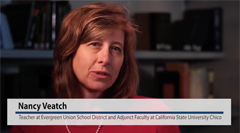 How to Use Student Work in Professional Learning
How to Use Student Work in Professional Learning
Watch as teacher and adjunct professor Nancy Veatch explains why looking at student work together with other teachers is so powerful.
- ELA Grade 7
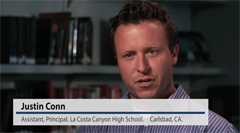 What Teachers Can Learn from Analyzing Student Work
What Teachers Can Learn from Analyzing Student Work
In this video assistant principal Justin Conn explains how he and a colleague worked together to unpack the Smarter Balanced rubrics by dimension.
- ELA Grade 8
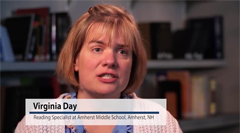 The Benefits of Looking Closely at Student Work
The Benefits of Looking Closely at Student Work
Watch as reading specialist Virginia Day explains how collaboration and close analysis helped her gain a deeper understanding of what performance tasks demand of students.
- Math Grade 3
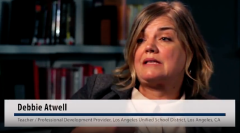 Using performance tasks to target student support
Using performance tasks to target student support
Watch as former teacher and professional development provider Debbie Atwell explains how looking at student responses helped her unpack student knowledge and skills to target student support.
- Math Grade 5
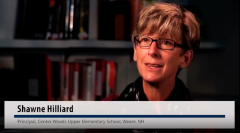 Using student responses to build meaningful conversations
Using student responses to build meaningful conversations
In this video, former 5th grade teacher Shawne Hillard explains how responses to performance tasks can be used to facilitate conversations with students about what they do understand and where they need opportunities to deepen understandings.
- Math Grade 7
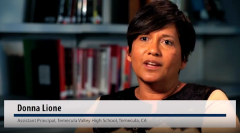 The importance of purposeful language
The importance of purposeful language
In this video, former math specialist and coach Donna Lione discusses how different interpretations of task wording impact responses to performance tasks.
- Math – High School
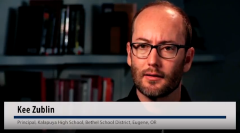 Supporting shifts in instructional practice
Supporting shifts in instructional practice
Watch as principal Kee Zublin discusses how performance tasks support needed instructional shifts in mathematics.
- Math Reflection
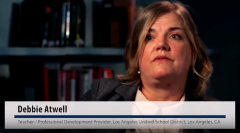 Using a rubric to score student responses individually and collaboratively
Using a rubric to score student responses individually and collaboratively
Watch as four educators reflect on the use of a rubric to score student responses and on the value of collaborative scoring.
Analyzing Student Work
- ELA Grade 8
 Coming to Consensus Using the Rubric
Coming to Consensus Using the Rubric
Watch as two educators use the language of the rubric to come to consensus about scores.
- ELA Grade 5
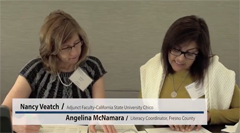 Digging into the Language of the Rubric
Digging into the Language of the Rubric
In this video two educators look carefully at the language of the rubric in order to determine correct scores for the different dimensions.
- ELA Grade 7
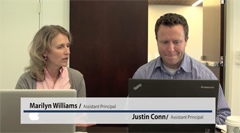 Looking at Trends in Student Work
Looking at Trends in Student Work
Thinking about strengths and weaknesses helps these educators determine trends across student work samples.
- ELA Grade 11
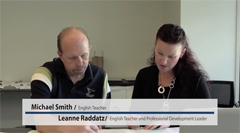 Looking Closely at Argumentative Writing Using the Rubric
Looking Closely at Argumentative Writing Using the Rubric
In this video, educators analyze student work alongside the rubric in order to determine the argument, counter argument, evidence and elaboration.
- ELA Grade 4
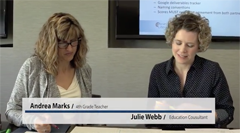 Looking for a Preponderance of Evidence When Scoring
Looking for a Preponderance of Evidence When Scoring
These two educators locate a preponderance of evidence to help them land upon the correct score.
Professional Learning Resources
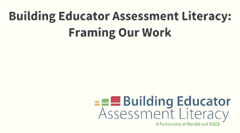 Building Educator Assessment Literacy – Assessment Continuum
Building Educator Assessment Literacy – Assessment Continuum
This video provides an overview of Smarter Balanced performance tasks, their part in the Smarter Balanced assessment system, and how they fit into the assessment continuum.
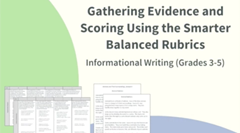 Gathering Evidence and Scoring – Elementary
Gathering Evidence and Scoring – Elementary
This video demonstrates a process for using evidence-based scoring to evaluate student writing using the Smarter Balanced Informational Rubric (Grades 3–5).
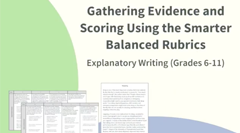 Gathering Evidence and Scoring – Secondary
Gathering Evidence and Scoring – Secondary
This video demonstrates a process for using evidence-based scoring to evaluate student writing using the Smarter Balanced Explanatory Rubric (Grades 6–11)
 Universal Design for Learning Overview
Universal Design for Learning Overview
This video provides an overview of Universal Design for Learning (UDL), a framework that can inform the design of instruction and assessment to ensure access to learning for all students.
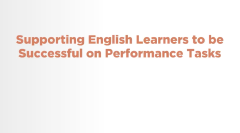 Developing College and Career Readiness Skills in English Learners in ELA
Developing College and Career Readiness Skills in English Learners in ELA
This video focuses on the challenges posed by English Language Arts performance tasks and shares various strategies that teachers of English learners can use to provide the support students need to develop essential 21st Century language skills.
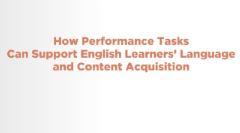 Supporting English Learners Through Performance Assessment
Supporting English Learners Through Performance Assessment
Performance tasks, which ask students to provide evidence of their learning through a tangible product or performance, offer an excellent opportunity for teachers of English learners to simultaneously engage students in meaningful language development and content learning.